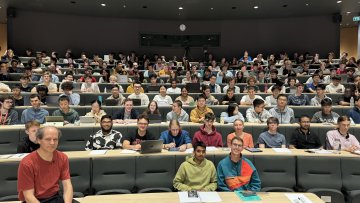$k$-blocks and forbidden induced subgraphs
Part of the Oxford Discrete Maths and Probability Seminar, held via Zoom. Please see the seminar website for details.
Abstract
A $k$-block in a graph is a set of $k$ vertices every two of which are joined by $k$ vertex disjoint paths. By a result of Weissauer, graphs with no $k$-blocks admit tree-decompositions with especially useful structure. While several constructions show that it is probably very difficult to characterize induced subgraph obstructions for bounded tree width, a lot can be said about graphs with no $k$-blocks. On the other hand, forbidding induced subgraphs places significant restrictions on the structure of a $k$-block in a graphs. We will discuss this phenomenon and its consequences in the study of tree-decompositions in classes of graphs defined by forbidden induced subgraphs.


